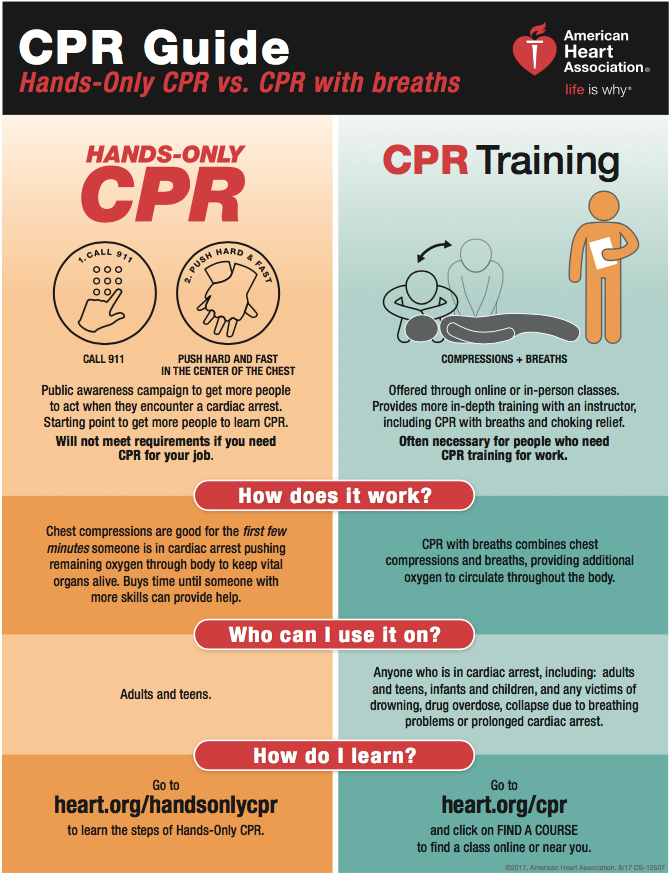Hands-only CPR vs. CPR with breaths.
Like changing a tire, or the Heimlich maneuver, Cardiopulmonary resuscitation (CPR) is something that everyone should know how to do – especially with the prevalence of heart disease in America. And unless our jobs require it, many of us aren't up to date with the latest information on the life-saving technique. In fact, you may not even know that there are two types of CPR; 'hands-only CPR,' which doesn't require breathing for the victim, and 'CPR with Breaths' that does. In fact, it's recommended that two breaths are given for every 30 compressions. So, what's the difference?
Luckily, the American Heart Association has provided a nice little infographic that compares the two.

In any given year, more than 350,000 cardiac arrests occur outside of the hospital. Of those who experience cardiac arrest, only 46 percent receive the immediate attention necessary to give them a fighting chance. The good news, though, is that if CPR is administered immediately after the event that can double or even triple a person's chances of survival.
It's even better if you're using an AED, which we touched on back in January. Should you need a local trainer to come to your organization, we at OCN highly recommend Quality of Colorado.
